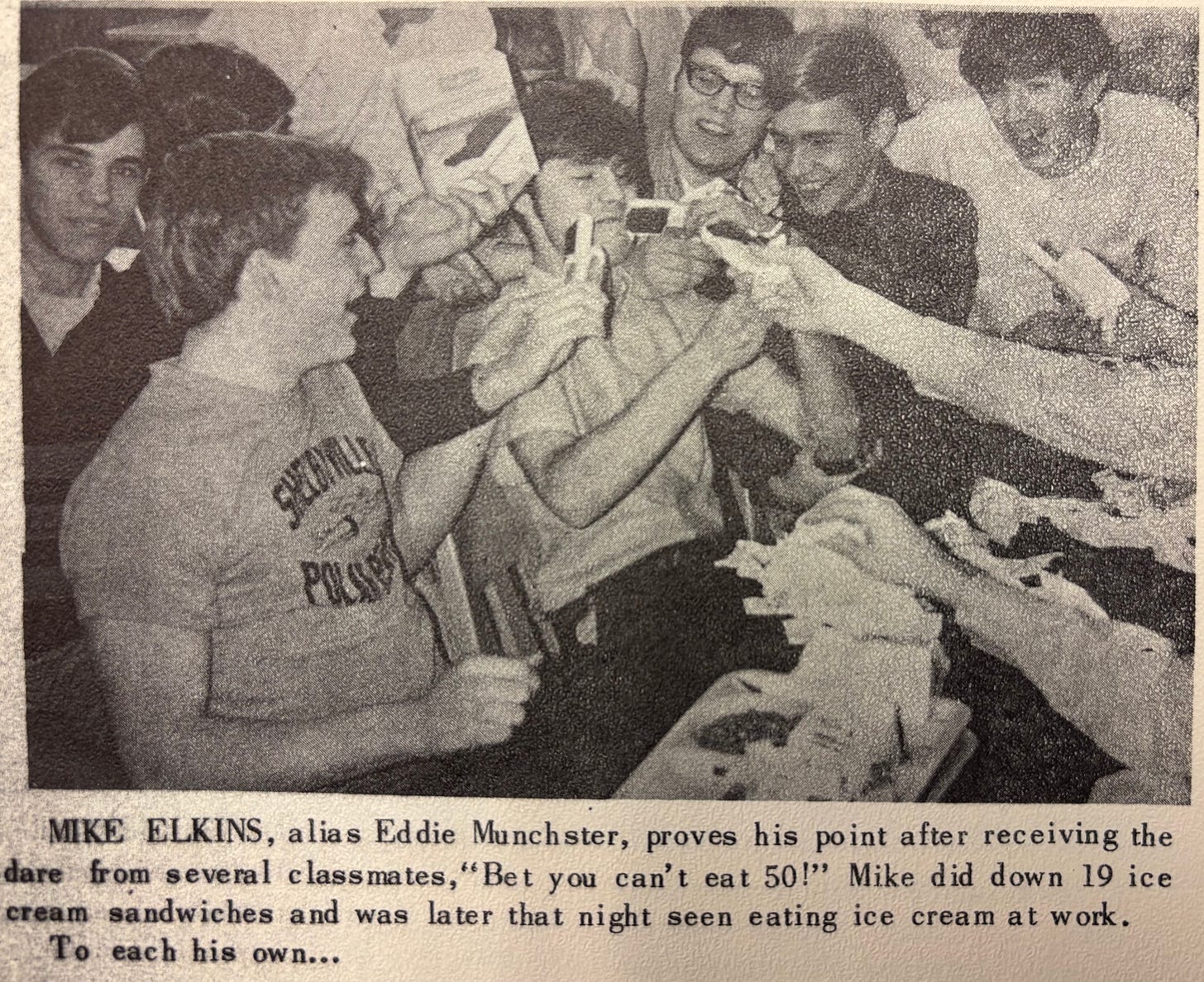ADDISON TIMES MAJOR SPONSOR: STEPHENSON RIFE ATTORNEYS
NOTEBOOK:
The local real estate market is strong, with home sales in Shelby County reaching 58 last month, compared to 42 in May and 42 in June 2024. Last month was the second-highest for closed home sales since July 2022, when 67 single-family residences were sold. Last September saw 61 sales. Local inventory is also up, with 100 homes on the market last month, the highest since at least the beginning of 2022, according to MIBOR data.
Adjusted Gross Revenue at Horseshoe Indianapolis casino was down last month compared to May, but up slightly from a year ago. Horseshoe reported $23.4 million in AGR for June 2024, down from $27.5 million in May, and up from $22.9 million in June 2024.
The Northwest Shelby County Concerned Citizens Coalition will host its next quarterly meeting Aug. 5, 6 p.m., at the Moral Township Fire Department. Chris King, who serves on the Indiana Economic Development Corporation board of directors, and Brian Asher, Executive Director of Shelby County Development Corporation, will be the featured speakers.
HOOSIER NEWS: In response to the urgent call for action to protect the city’s youth, 11 Marion County school superintendents have announced their full support for extending curfew hours. The proposed ordinance would begin curfew hours two hours earlier than the current law, restricting unsupervised public access for minors between 9 p.m. and 5 a.m. Sunday through Thursday, and 11 p.m. to 5 a.m. Friday and Saturday for youth ages 15 to 17. For those younger than 15, the curfew would apply daily from 9 p.m. to 5 a.m. (IndyStar)
NATIONAL NEWS: A new study published in Waste Management argues that the food leftover in short-term rentals adds up. The aggregate value of food wasted by U.S. vacation rentals totals about $2 billion per year. This breaks down to $12 per night of short-term lodging, and comes out to 5.1 percent of the nightly rental fee. All told, the annual estimate is $2.3 billion spent on unconsumed food by the time a short-term renter’s vacation ends. (The Ohio State University/Numlock)
The Addison Times is pleased to offer free milestone announcements. Forms are available here: Engagement Announcement, Wedding Announcement and Anniversary Announcement.
Want the daily edition read to you? Struggling with your email provider filtering out your local news? The Addison Times Substack app will solve those challenges!
ADDISON TIMES MAJOR SPONSOR: FULL CANOPY REAL ESTATE
Shelby County History: Famous, Infamous and Unknown, Part I
by Donna Dennison, Head of Genealogy and History, Shelby County Public Library
During Shelby County’s bicentennial in 2022, we launched a program highlighting one famous person, one infamous person and one unknown person from Shelby County history. It quickly became a favorite at the library, and I’ve presented it at least twice a year ever since.
On Wednesday, July 9, I gave another “Famous, Infamous and Unknown” presentation at the Strand Theatre. I thought I’d share those stories here, too.
First up was the famous Scott C. Bone. Many people ask, “Who?”—and wonder how he could be considered famous. Scott was born in 1860 on the banks of the Flat Rock River. His grandfather had built the dam and mill there, and Scott was born in a nearby cabin.
When Scott was just a toddler, his father left to serve in the Civil War. His mother, left to raise him alone, taught him to read, write and do math. By age six, when he started walking a mile to school, he was already ahead of his peers academically.
By age 16, Scott was writing newspaper columns about Shelbyville for The Indianapolis Journal, Cincinnati Daily and Chicago Tribune. By 30, he was chief editor of The Washington Post. In Washington, D.C., he became friends with many high-ranking officials, including President Theodore Roosevelt, and even traveled west with him.
In 1920, Scott left Washington to become chief editor of The Seattle Post. He, his wife and their seven children fell in love with the region. In 1921, he was named governor of the Alaska Territory.
In December 1924, the remote town of Nome, Alaska, became cut off from the rest of the world due to heavy snowfall and frozen ports. A diphtheria outbreak had begun—first one child fell ill, then many more. The only doctor in town realized the situation could be catastrophic for the population of about 10,000. Without antiserum and with no clear way to get it, he telegraphed Governor Bone, warning of near-total losses without immediate help.
Faced with this emergency, Governor Bone and others devised a plan to transport the antiserum using sled dogs. Twenty mushers and more than 150 sled dogs participated in what became known as the “Great Race of Mercy.” The serum—packed in wooden crates with straw and wrapped in furs—traveled 654 miles in five and one-half days, saving the people of Nome.
Governor Bone retired to California in December 1925, but he never forgot his roots in Shelbyville. Newspaper clippings often noted when he and his family came back to visit. His oldest son even married a girl from Shelbyville—someone he met during one of those trips. The “Great Race of Mercy” is still remembered in Alaska today. We know it better as the Iditarod.
SHS Courier Archive Highlights
March 31, 1970, Part II
A total of 119 seniors had shortened schedules. Six students had only two classes per day; 13 attended three classes; 25 went through fourth period; and many went from 8 a.m. to 1:30 p.m. Several juniors who held local jobs were allowed to leave school at 2:30 p.m.
Marshal Whitehurst, from the Indianapolis R.C.A. plant, spoke at the Science Club meeting. He showed a color film called “The Sounds and the Story.”
The French Club met in the library to hear Mrs. Stratford, a native of France, present on important French landmarks. She showed numerous slides. The French Club committee was comprised of Angie Snowden, Debbie McKee, Val Stephens, Connie Williams, Bonnie Gibson and Debby Jones.
The Radio Club offered instruction on Morse Code (listed as “Morris Code” in The Courier) and radio theory at their meeting. Mr. Mel Davies was the sponsor. Officers were Steve McMullin, Rick Morris and Tom Fisher.
Judge Lee McNeely, SHS alumni, was the sponsor of the First Methodist Church Sr. MYF group. A recent MYF meeting had featured a presentation by Dan Hayes and David Marshall.
ADDISON TIMES MAJOR SPONSOR: MAJOR HEALTH PARTNERS
This Day in Shelby County History
News around Shelbyville and the surrounding area as reported on or about this date in history. Selections are curated by The Addison Times from Shelby County Public Library Genealogy Department materials.
2005: The Shelbyville Parks Department extended its parking facilities by 25 more spaces by paving the west side of the McNeely Center.
1995: Shelbyville city officials asked the owner of Poor Boys Used Furniture, 154 E. Washington St., to install “no dumping” and “no trespassing” signs in his private alley beside the business. Neighbors had been complaining about debris and trash in the alley, and the owner said it was due to people dumping trash, furniture and box springs.
1985: Although Coca-Cola officials announced “The Real Thing” formula was returning, it would take three weeks for cans and bottles to reach Shelbyville. The 99-year-old formula had been retired for two months before being brought back. Brian Meeke, manager of Mickey’s T-Mart, said a lot of people had complained about New Coke and had asked him how to get the old formula back. Dick Rehme, manager of the Shelbyville Coca-Cola Bottling plant, said he had heard the news about the return of “Old Coke” on the radio.
1975: The Shelbyville News published a photo showing Jim Balting, 710 Main St., holding a 23-pound snapping turtle he had caught in the Big Blue River near Marietta. He and Clyde McDaniel had caught about 20 turtles by hand and were storing them in home freezers for future frying purposes. Balting said he planned to try a turtle soup recipe.
1965: Walter Gray, 401 Miller Ave., operator of Five Points Speed Wash at the same address, announced he had purchased the Shelbyville Laundromat, 126 E. Washington St., from William Rowland. Alma Pound would continue as manager there, assisted by Reuella Lee.
1955: City officials plugged an unfinished sewer in Sunrise Addition during heavy rains after water pouring from open manholes caused sewage to back up in area basements. A similar issue had happened a couple of weeks prior on Knightstown Road.
1945: Federal officials said they would begin tagging and towing cars that did not display the new Federal auto tax stamp in the lower right corner of the windshield. Automobile owners were to have paid the tax and obtained the stamp by July 1.
1935: William Lyons and Ed Ferleman were tearing away an old tin roof on a farm home owned by O.P. Yeager near the Ray churches when they found an old brassbound folding rule under a roof tile. The 40-year-old rule was soiled by age but otherwise in excellent condition. They brought it to Joe Pearson, local hardware store and tinshop owner, who cleaned it off. The name inscribed on the rule was “Joe Pearson,” Mr. Pearson’s father. Lyons and Ferleman gave him the rule. “I wouldn’t sell that rule for $100,” Joe told The Republican.
1925: Squire Harry C. Ray turned 79. He worked his usual schedule, and many local attorneys stopped by to wish Ray a happy birthday.
1915: The Republican reported on the new Christian Scientist church edifice on S. Tompkins St. The chapel was finished in white with mahogany trim. There were comfortable folding opera chairs and carpet. Large ferns, white roses and other white flowers were on the platform.
ADDISON TIMES MAJOR SPONSOR: Freeman Family Funeral Homes & Crematory
OBITUARIES
None today.








